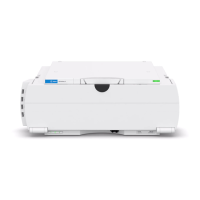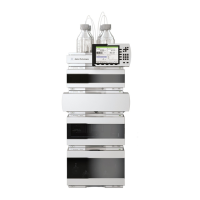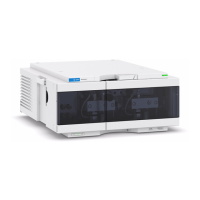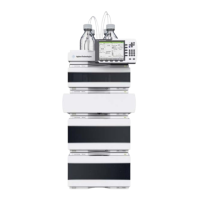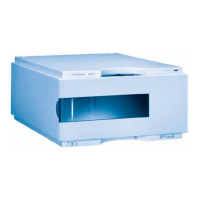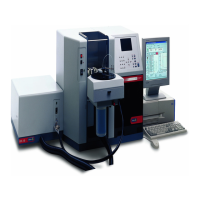80 1260 Infinity Binary Pump User Manual
5 Optimizing Performance
When to Use a Vacuum Degasser
When to Use a Vacuum Degasser
A degasser removes air, which is dissolved in any solvent. When solvents
are heated or mixed with other solvents, air can leave the solvent and
form small bubbles. Over time, these bubbles accumulate and can cause
pressure fluctuations which may finally result in retention time shifts.
The G4225A High- performance Degasser and the G1322A Vacuum Degasser
are external degassers that are designed to be used with Agilent 1260
Infinity binary pumps or 1100/1200 Series pumps. 1260 Infinity
quaternary pumps, 1290 Infinity pumps, and 1120/1220 Infinity pumps
have built- in degassers.
A degasser is needed for low pressure mixing pumps like Agilent
quaternary pumps. High pressure mixing pumps like Agilent binary pumps
are more robust with respect to bubble formation, but a degasser is
recommended for best performance. Additionally, a degasser is highly
recommended for the following applications:
• Your detector is used with maximum sensitivity in the low UV
wavelength range.
• Your application requires highest injection precision.
• Your application requires highest retention- time reproducibility (flow
rates below 0.5 mL/min).
• The binary pump is used with bypassed damper and mixer.
Operational Hints for the Vacuum Degasser
If you are using the vacuum degasser for the first time, if the vacuum
degasser was switched off for any length of time (for example, overnight),
or if the vacuum degasser chambers are empty, you have to prime the
vacuum degasser before running an analysis. Priming is usually done by
pumping at a high flow rate (3 – 5 mL/min). Alternatively, a syringe can
be used to draw the solvent through the (empty) degasser if the pump
does not aspirate the solvent by itself. For details see “Initial Priming” on
page 54.
For more information see the Agilent 1260 Infinity Standard Degasser
User Manual.
